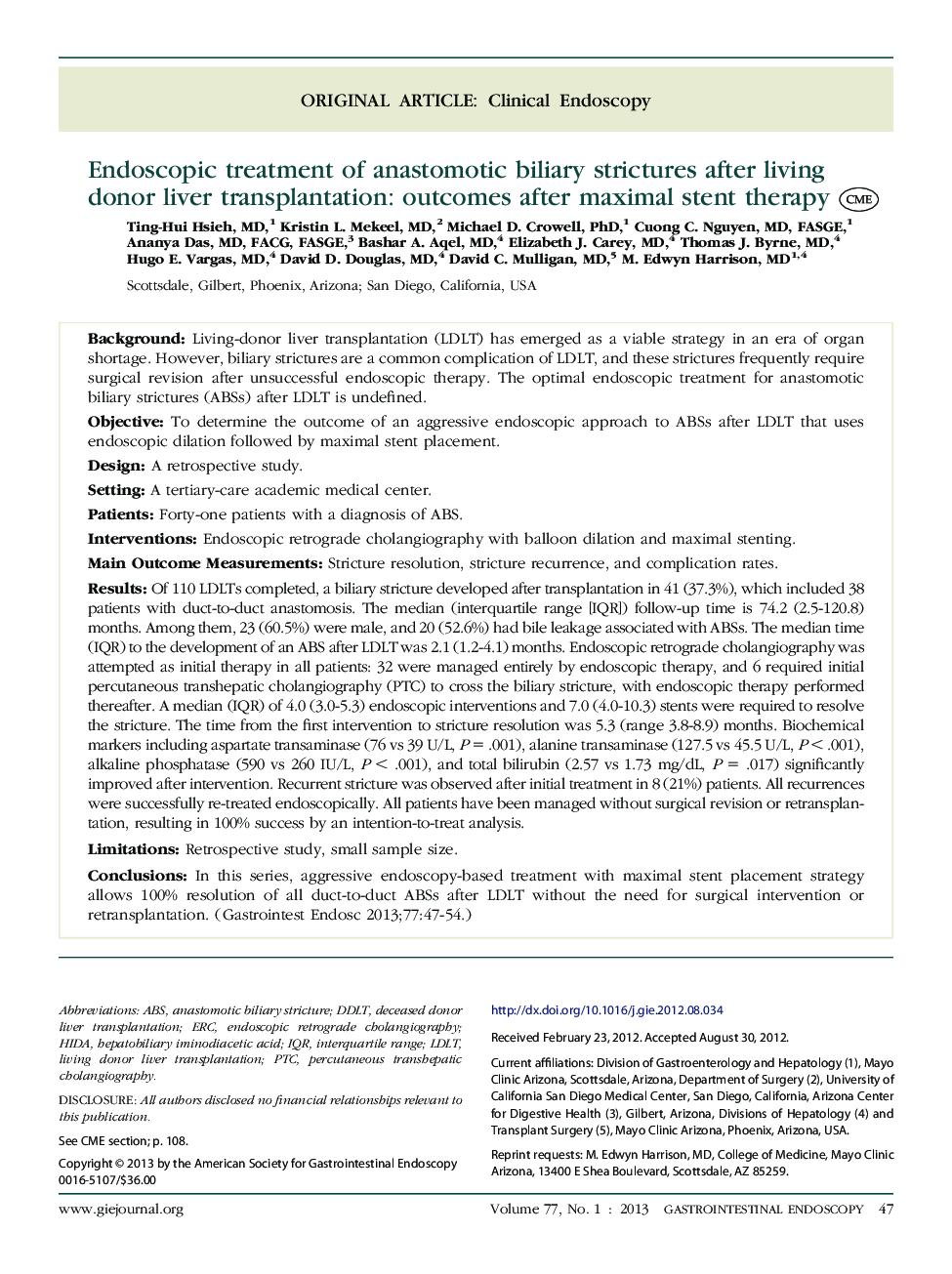| کد مقاله | کد نشریه | سال انتشار | مقاله انگلیسی | نسخه تمام متن |
|---|---|---|---|---|
| 3303589 | 1210318 | 2013 | 8 صفحه PDF | دانلود رایگان |

BackgroundLiving-donor liver transplantation (LDLT) has emerged as a viable strategy in an era of organ shortage. However, biliary strictures are a common complication of LDLT, and these strictures frequently require surgical revision after unsuccessful endoscopic therapy. The optimal endoscopic treatment for anastomotic biliary strictures (ABSs) after LDLT is undefined.ObjectiveTo determine the outcome of an aggressive endoscopic approach to ABSs after LDLT that uses endoscopic dilation followed by maximal stent placement.DesignA retrospective study.SettingA tertiary-care academic medical center.PatientsForty-one patients with a diagnosis of ABS.InterventionsEndoscopic retrograde cholangiography with balloon dilation and maximal stenting.Main Outcome MeasurementsStricture resolution, stricture recurrence, and complication rates.ResultsOf 110 LDLTs completed, a biliary stricture developed after transplantation in 41 (37.3%), which included 38 patients with duct-to-duct anastomosis. The median (interquartile range [IQR]) follow-up time is 74.2 (2.5-120.8) months. Among them, 23 (60.5%) were male, and 20 (52.6%) had bile leakage associated with ABSs. The median time (IQR) to the development of an ABS after LDLT was 2.1 (1.2-4.1) months. Endoscopic retrograde cholangiography was attempted as initial therapy in all patients: 32 were managed entirely by endoscopic therapy, and 6 required initial percutaneous transhepatic cholangiography (PTC) to cross the biliary stricture, with endoscopic therapy performed thereafter. A median (IQR) of 4.0 (3.0-5.3) endoscopic interventions and 7.0 (4.0-10.3) stents were required to resolve the stricture. The time from the first intervention to stricture resolution was 5.3 (range 3.8-8.9) months. Biochemical markers including aspartate transaminase (76 vs 39 U/L, P = .001), alanine transaminase (127.5 vs 45.5 U/L, P < .001), alkaline phosphatase (590 vs 260 IU/L, P < .001), and total bilirubin (2.57 vs 1.73 mg/dL, P = .017) significantly improved after intervention. Recurrent stricture was observed after initial treatment in 8 (21%) patients. All recurrences were successfully re-treated endoscopically. All patients have been managed without surgical revision or retransplantation, resulting in 100% success by an intention-to-treat analysis.LimitationsRetrospective study, small sample size.ConclusionsIn this series, aggressive endoscopy-based treatment with maximal stent placement strategy allows 100% resolution of all duct-to-duct ABSs after LDLT without the need for surgical intervention or retransplantation.
Journal: Gastrointestinal Endoscopy - Volume 77, Issue 1, January 2013, Pages 47–54